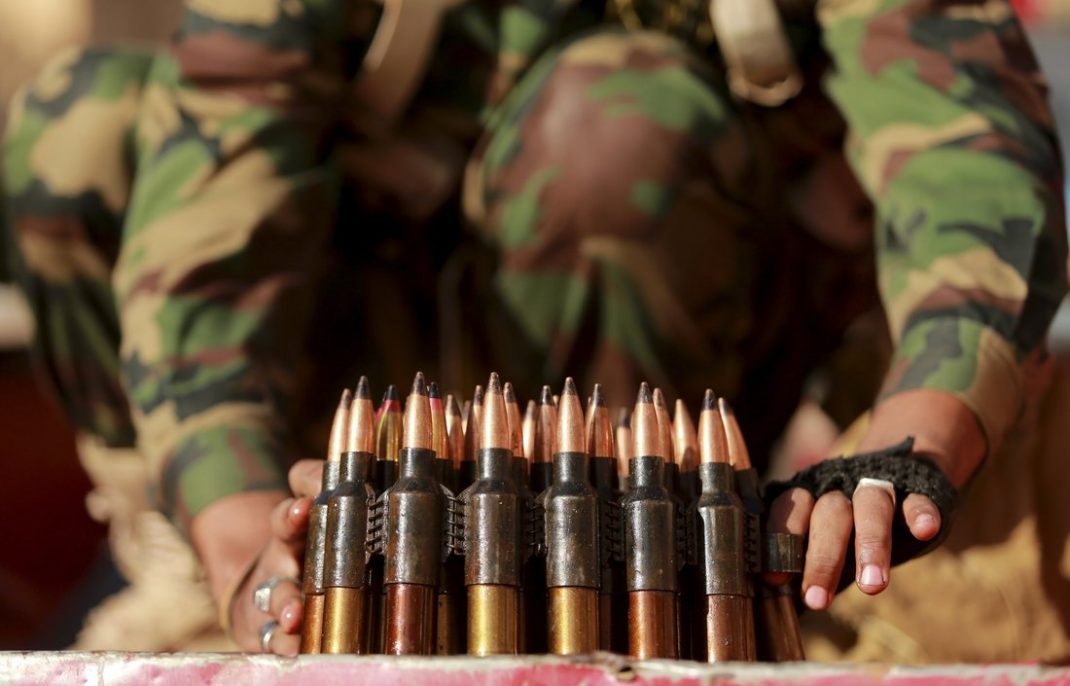By Wolfgang Pusztai

The start of the Battle for Tripoli in April 2019 marked the beginning of a new dramatic phase in Libya’s ongoing civil war.
.
PART THREE
II-6 Security factors
Libya’s fragmented security landscape is characterised by the use of force for political motivations, influence, control of resources, as well as terrorism and counterterrorism. Crime is a major problem in Libya today.
The capital and the coastal road to Tunisia are especially plagued by criminal gangs and rogue militias.
The LNA is the army of the HoR. Its commander, Marshal Khalifa Heftar, is widely praised for his leadership in the east, but condemned for his staunch anti-Islamist position by many in the west.
Although Heftar is arguably the single most influential person in the east, he is dependent on the support of some powerful tribal leaders. The LNA’s actions are driven by the fight against political Islam and terrorism (in their very wide definition).
The militias from Misrata are the most powerful military group in western Libya, although they are weakened by internal quarrels. Some of them are Islamist or Islamist-leaning. Misrata militias are the backbone of the defence of Tripoli.
The main driving elements for Misrata’s military forces are the struggle for influence beyond its own territory, in particular in Tripoli and the oil crescent, and the support for Islamist groups, at times in combination with fighting what is perceived a return of the Gaddafist.
The Misrata have strong relations with descendants from the city living in the east for centuries and the eastern Kouloughlis.
Tripoli – and the GNA – is now under control of a few powerful militias. The government is not able to make any decisions against their will, a fact which is frequently ignored by foreign diplomats.
Those militias have the objective of maintaining the status quo, as they benefit strongly from the weakness of the GNA, also in pursuing their own criminal businesses.
There are hundreds of local militias all over the country that are city-based or tribal, ranging from a couple of dozen fighters to several thousand.
While they are at times considered part of a large alliance like the LNA, or ‘pro-GNA,’ most of them are just loyal to their local communities. They want to maintain or expand their area of influence and get their share of the national wealth.
There are several terrorist groups active in Libya. All of them share the vision of establishing a caliphate, a conservative Islamist state based strictly on Sharia law.
Among the most important are IS and Al-Qaeda in the Islamic Maghreb (AQIM). After the defeat in Sirte, IS was significantly weakened, but not destroyed.
The group is still present in many parts of the country and has changed its strategy.
Now IS uses south-western Libya as a safe haven for operations in the wider region, while conducting in Libya only a small-scale guerilla-style campaign with occasional spectacular attacks.
Terrorists are also a serious threat to the hydrocarbon industry and the Great-Mman-Made-River.
III- Conclusion
Libya appears to be a rather unique case, where the international community replaced a legitimate government with a new one without the consensus of the local institutions.
From a legal point of view, it is not entirely clear who governs Libya. Bad governance, corruption and ineffectiveness have led to a lack of confidence in the governing authorities.
Since the revolution, the administrative situation has become even worse. In some parts of the country, administration is virtually non-existent.
There is no trust in administrative regulations and the rule of law, as they frequently cannot be enforced. Overall, this often ends with an arbitrary rule of the militias and lawlessness.
Foreign involvement is contributing to – dependent on the point of view – the stabilisation or destabilisation of Libya. And this will continue.
The country is in a geo-strategically important location, is too much of a risk for its neighbours, and offers too many economic opportunities to be left alone.
It is simply not realistic for all of those stakeholders to keep out of Libya voluntarily, as it is far too dangerous e.g.
(a) for Egypt to end up with the lethal threat of a terrorist safe haven on its western border,
(b) too risky for Turkey to lose its economic opportunities in Libya, or
(c) for Italy to become disconnected from Libya’s oil and gas while being infiltrated by terrorists and experiencing an increase in migration.
But even if no more weapons are smuggled into Libya, the available stocks are enough to continue the war for many more years.
Difficult living conditions have led to a tense situation, in particular during the hot season in the capital Tripoli, which has probably been most affected by the power cuts and water shortages.
All of these problems are frequently blamed on the ‘others,’ although local incompetence and corruption are often the more important factors.
This is frequently exaggerated by propaganda to serve the bad image of the enemy. The country is deeply divided between east and west, between radical Islamists and others, and between some Arab tribes and the Toubou.
There are also conflicts between some Arab tribes.
There is no chance for a return of many domestic refugees any time soon. A form of permanent resettlement is maybe not ‘correct,’ but is simply more realistic.
Libya’s rentier economy is very vulnerable to blockades and terrorist attacks on the hydrocarbon industry, which is an easy target.
Most foreign investors are staying away from even the more secure parts of the country because of very high levels of corruption, low payment morale and a lack of legal certainty.
Urbanisation has the consequence that many young people are losing their tribal roots and can easily be attracted by militias and radical Islamists.
Militias make a huge amount of money and often pay their members very well. Therefore, civilian jobs are not so attractive for the young militiamen.
There is also a kind of Islamist nexus, as there are connections between many of the older Islamists from their common suffering under Gaddafi, but it is doubtful as to how lasting this is among the younger.
IV. Outlook
For now, major improvements to governance or social standards are not in sight. Realistically, foreign interference will continue until one side is defeated.
Egypt is in the best geostrategic position to prevail with its local allies. This is only a question of how far the country is willing to go. It will at least secure its interests in eastern Libya, as it cannot afford a terrorist snakepit next door.
Libya’s demography and religious landscape also have several factors which will complicate the conflicts in Libya in the future even more than is already the case today.
Keeping the unsolved security challenges in Libya in mind, the country’s economic future is not too bright.
The struggle for resources is and will remain a main driving factor in Libya’s civil war as long as there is no agreed formula for their distribution.
Altogether, the situation in Libya is very complex. It must not be simplified by reducing the conflict to a fight for or against Heftar or the Islamists.
The likely development of the factors discussed does not suggest that the situation will get better any time soon.
***
Wolfgang Pusztai is a freelance security & policy analyst with a special focus on the MENA region. He has both a military and an academic background in strategy.
___________





